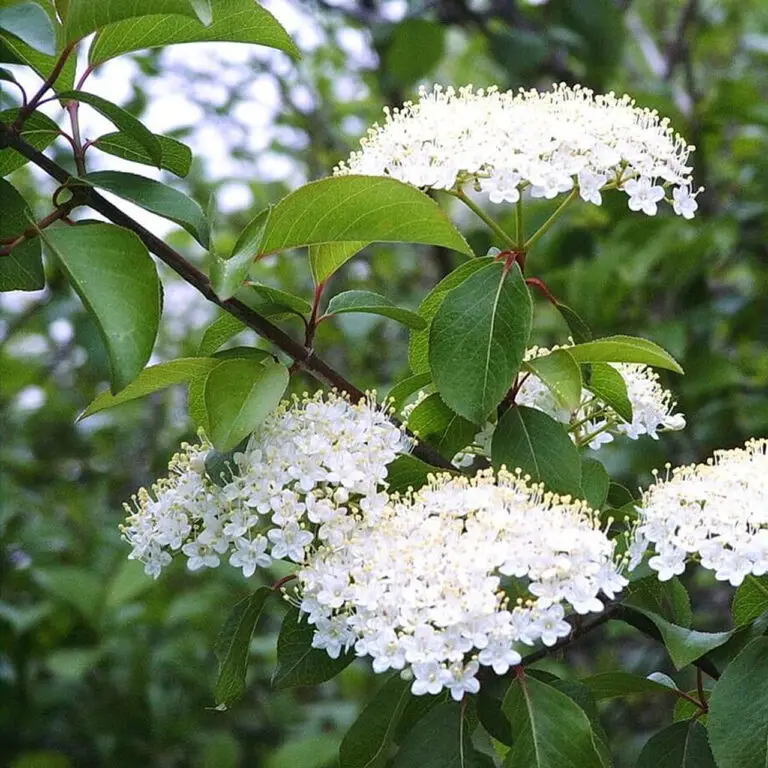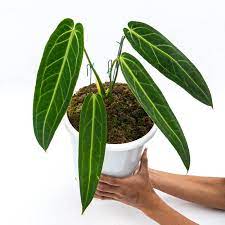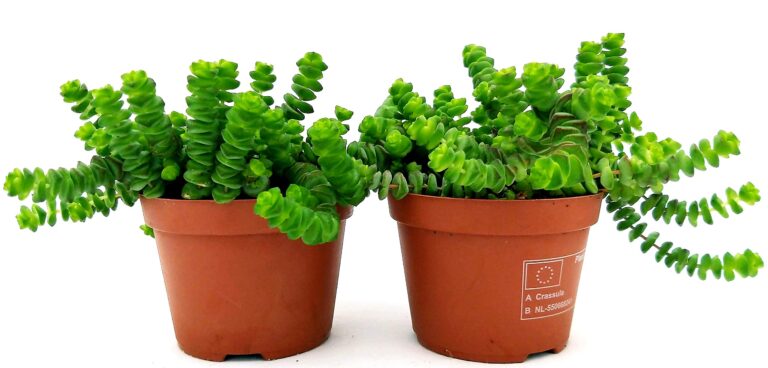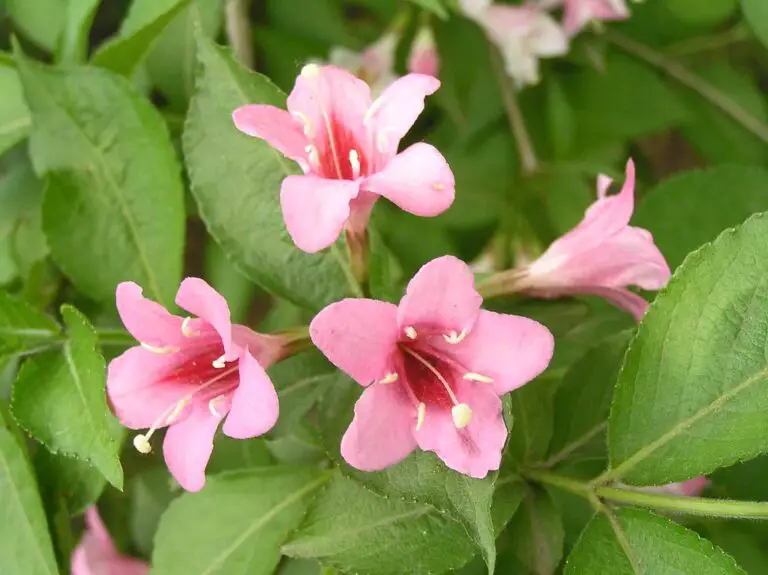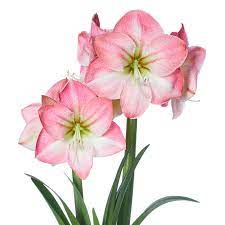Introduction

Welcome to the enchanting world of Begonia ‘Black Magic.’ This captivating plant, classified as a Rex Begonia and renowned for its mesmerizing hybrid qualities, will surely add a touch of magic to your garden. In this comprehensive guide, we will delve into the characteristics, requirements, and care tips that will help you nurture and showcase the full potential of this botanical wonder.
Begonia ‘Black Magic’ Overview: Begonia ‘Black Magic’ is not just a plant; it’s a living masterpiece. With its striking foliage and unique hybrid qualities, this begonia stands out among its botanical peers. The leaves, adorned with intricate patterns and hues ranging from deep greens to purples, make it a true visual delight.
Classification as a Rex Begonia: Belonging to the Rex Begonia family, ‘Black Magic’ inherits its distinctive features from this illustrious lineage. The Rex Begonias are renowned for their ornate and often asymmetrical leaves, making them a favorite among collectors and enthusiasts. As a member of this esteemed family, ‘Black Magic’ lives up to its reputation, boasting a captivating aesthetic that demands attention.
Hybrid Nature of Begonia ‘Black Magic’: What sets ‘Black Magic’ apart is its hybrid nature resulting from carefully curated breeding. This hybridization brings together the best of both worlds, combining the robust characteristics of its parent plants to create a begonia that thrives in various conditions while maintaining its unique allure. This hybrid vigor contributes to the plant’s resilience and adaptability, making it an excellent choice for both novice and experienced gardeners.
As we embark on this journey to unlock the secrets of Begonia ‘Black Magic,’ prepare to be captivated by its beauty and discover the nuances of caring for this extraordinary plant. Whether you’re a seasoned gardener or just starting your green-thumb adventure, this guide will provide you with the insights needed to cultivate a thriving and magical begonia in your garden.
Characteristics of Begonia ‘Black Magic’:
Begonia ‘Black Magic’ is a botanical masterpiece, celebrated for its distinctive characteristics that set it apart in the world of Rex Begonias. Understanding these features is key to appreciating the allure of this enchanting plant.
- Foliage Elegance: The defining feature of ‘Black Magic’ lies in its foliage. The leaves exhibit an exquisite blend of colors, ranging from deep shades of green to rich purples and even hints of silver. The intricate patterns, often resembling the brushstrokes of a fine artist, make each leaf a work of art.
- Leaf Texture: Run your fingers across the leaves, and you’ll be captivated by their velvety texture. The smooth, almost suede-like feel adds a tactile element to the plant, making it not only visually appealing but also a delight to touch.
- Size and Form: ‘Black Magic’ typically reaches a moderate size, making it suitable for both indoor and outdoor spaces. The plant’s bushy and compact form contributes to its aesthetic appeal, creating a lush and vibrant display.
- Variegation: Variegation is a hallmark of ‘Black Magic.’ The begonia’s leaves showcase a captivating interplay of colors, with some displaying bold contrasts and others blending hues seamlessly. This variegation adds depth and visual interest to the overall appearance of the plant.
- Unique Leaf Shapes: Explore the foliage closely, and you’ll notice an array of leaf shapes within the same plant. From asymmetrical patterns to elegantly scalloped edges, each leaf contributes to the overall visual diversity, making ‘Black Magic’ a standout choice for botanical enthusiasts.
- Seasonal Changes: One of the fascinating aspects of this begonia is its response to seasonal changes. As the weather shifts, ‘Black Magic’ may undergo subtle transformations in color and intensity, ensuring that your garden enjoys a dynamic and ever-evolving display throughout the year.
In summary, the characteristics of Begonia ‘Black Magic’ make it a captivating addition to any garden or indoor space. Its aesthetic appeal, combined with the ease of care, makes it an excellent choice for plant enthusiasts looking to elevate their greenery collection with a touch of magic.

Requirements for Begonia ‘Black Magic’:
To unlock the full potential of Begonia ‘Black Magic’ and ensure its vibrant growth, it’s crucial to understand and meet its specific requirements. From soil preferences to climate considerations, here’s a comprehensive guide to providing the ideal conditions for this enchanting begonia.
- Soil Type: ‘Black Magic’ thrives in well-draining, rich, and slightly acidic soil. A high-quality potting mix with organic matter provides the perfect foundation for its growth. Ensure that the soil retains moisture without becoming waterlogged, as excessive moisture can lead to root rot.
- pH Levels: Aim for a slightly acidic to neutral soil pH between 6.0 and 7.0. Maintaining the right pH level is essential for nutrient absorption and overall plant health. Regularly test the soil to make adjustments as needed, ensuring the begonia receives the optimal pH for its development.
- Environmental Conditions: ‘Black Magic’ thrives in a warm and humid environment, making it well-suited for indoor cultivation. Aim for temperatures between 65°F to 75°F (18°C to 24°C) during the day and slightly cooler temperatures at night. Adequate humidity levels, preferably around 50% or higher, contribute to the begonia’s well-being.
- Climate and Location: While ‘Black Magic’ can be grown outdoors in temperate climates, it’s crucial to protect it from harsh sunlight and strong winds. Partial shade or filtered sunlight is ideal for outdoor cultivation. In regions with colder winters, consider cultivating this begonia as a potted plant that can be moved indoors during the colder months.
- Container Considerations: When growing ‘Black Magic’ in containers, choose pots with drainage holes to prevent waterlogging. This allows for better control over soil conditions. Select a container that accommodates the size of the mature plant, providing ample space for root development.
- Watering Routine: Maintain a consistent watering routine, keeping the soil evenly moist. Water the begonia when the top inch of the soil feels slightly dry to the touch. Avoid overwatering, as excessive moisture can lead to root issues. Adjust the frequency of watering based on environmental conditions and the specific needs of the plant.
- Fertilization Schedule: Feed ‘Black Magic’ with a balanced liquid fertilizer every 4-6 weeks during the growing season (spring and summer). Reduce or suspend fertilization during the dormant period in fall and winter. Follow the manufacturer’s recommendations for dilution and application.
By meeting these specific requirements, you lay the foundation for a thriving Begonia ‘Black Magic.’ Understanding and catering to its needs ensures that this enchanting plant rewards you with lush foliage and a visually stunning display.
Plant Care for Black Magic Begonia:
Caring for Begonia ‘Black Magic’ goes beyond providing the right environment; it involves a thoughtful approach to its daily upkeep. From pruning to pest management, here’s a comprehensive guide to ensure your ‘Black Magic’ begonia thrives and remains a captivating centerpiece in your garden or home.
- Regular Pruning: Keep your ‘Black Magic’ begonia in top shape by regularly pruning it. Remove dead or yellowing leaves to encourage new growth. Trim back leggy stems to maintain a compact and bushy form. Pruning also allows better air circulation, reducing the risk of fungal diseases.
- Pinching for Fuller Growth: Pinching involves removing the tips of young stems to encourage branching and fuller growth. This technique is particularly useful for maintaining a compact and well-shaped ‘Black Magic’ begonia. Use clean and sharp scissors or pruning shears for precision.
- Deadheading Spent Flowers: Remove spent flowers promptly to redirect the plant’s energy toward producing new blooms. Deadheading not only improves the plant’s appearance but also promotes continuous flowering throughout the growing season.
- Staking for Support: Depending on the size and form of your ‘Black Magic’ begonia, you may need to provide support through staking. Use bamboo stakes or other suitable supports to prevent the plant from becoming top-heavy. Secure the stems loosely to avoid damage.
- Disease Prevention: ‘Black Magic’ begonia is susceptible to fungal diseases, especially in humid conditions. Prevent issues by avoiding overhead watering, providing adequate spacing between plants for air circulation, and using well-draining soil. Fungicides can be applied preventatively if needed.
- Pest Management: Keep a vigilant eye for common pests like aphids, mealybugs, and spider mites. Regularly inspect the undersides of leaves and the plant’s growing tips. If pests are detected, treat them promptly with insecticidal soap or neem oil. Quarantine new plants before introducing them to prevent pest infestations.
- Managing Overwintering: If you live in a region with colder winters, take precautions to protect your ‘Black Magic’ begonia. Before the first frost, bring potted plants indoors. In the garden, consider lifting tubers and storing them in a cool, dry place until the following spring.
- Adjusting Care Based on Seasons: ‘Black Magic’ begonia may have varying needs during different seasons. In the active growing season (spring and summer), maintain a regular watering and fertilization schedule. Scale back on both during the dormant period in fall and winter, allowing the plant to rest.
By incorporating these care practices into your routine, you’ll not only maintain the health and vitality of your Begonia ‘Black Magic’ but also ensure a stunning and continuous display of its captivating foliage throughout the year.
Fertilizing Strategies:
Fertilizing Begonia ‘Black Magic’ is a key aspect of its care regimen, contributing to robust growth, vibrant foliage, and a flourishing display of blooms. Understanding the specific fertilization needs of this begonia ensures that it receives the nutrients essential for its well-being.
- Choosing the Right Fertilizer: Opt for a balanced, water-soluble fertilizer with equal N-P-K (nitrogen, phosphorus, and potassium) ratios. A fertilizer labeled as 10-10-10 or similar is suitable for ‘Black Magic’ begonia. This balanced formulation provides the necessary nutrients for overall plant health.
- Frequency of Fertilization: During the active growing season, which typically spans spring and summer, fertilize your ‘Black Magic’ begonia every 4-6 weeks. This ensures a steady supply of nutrients to support vigorous growth, lush foliage, and potential flowering.
- Dilution and Application: Follow the manufacturer’s recommendations for diluting the fertilizer. It’s crucial not to exceed the recommended concentration, as over-fertilization can lead to salt buildup in the soil and harm the plant. Apply the diluted fertilizer to the soil around the base of the begonia, avoiding direct contact with the foliage.
- Suspending Fertilization in Dormancy: In fall and winter, ‘Black Magic’ begonia enters a dormant period characterized by slowed growth. During this time, reduce or suspend fertilization. Allowing the plant to rest during the dormant season is essential for its overall health and prepares it for renewed growth in the following active season.
- Organic Fertilizer Options: If you prefer organic fertilizers, there are suitable options for ‘Black Magic’ begonia. Well-rotted compost or composted manure can be incorporated into the soil during planting. Additionally, organic liquid fertilizers derived from seaweed or fish emulsion provide a gentle and natural nutrient boost.
- Micronutrient Considerations: While the primary nutrients (N-P-K) are essential, ‘Black Magic’ begonia also benefits from micronutrients like iron, magnesium, and manganese. If signs of nutrient deficiencies, such as yellowing leaves, appear, consider using a balanced fertilizer that includes micronutrients or apply a specific micronutrient supplement.
- Observing Plant Response: Pay attention to how your begonia responds to fertilization. If the foliage becomes excessively lush with little flowering, consider adjusting the fertilizer application. A balanced approach ensures that the plant receives the nutrients it needs without promoting excessive vegetative growth at the expense of blooms.
- Fertilizing Outdoor and Potted Plants: For outdoor plants, evenly distribute the fertilizer in the soil around the begonia, extending slightly beyond the drip line. In potted plants, apply the diluted fertilizer to the topsoil, taking care to avoid direct contact with the leaves. Water the plant after fertilizing to help nutrients reach the root zone.
By following these fertilizing strategies, you provide Begonia ‘Black Magic’ with the nutrients it requires for optimal growth and a stunning visual display. A balanced and mindful approach to fertilization contributes to the overall health and longevity of this enchanting begonia.
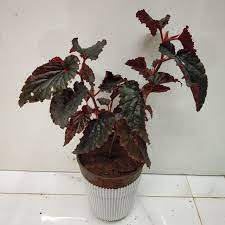
Optimal Light Conditions:
Providing the right amount and type of light is crucial for the well-being of Begonia ‘Black Magic.’ Understanding its preferences and adjusting light conditions accordingly ensures vibrant foliage, potential flowering, and overall plant health.
- Preferred Light Exposure: ‘Black Magic’ begonia thrives in bright, indirect light. While it can tolerate some direct sunlight, especially during the morning hours, it is best suited for partial shade or filtered sunlight. Protect the plant from intense afternoon sun, which can scorch the delicate foliage.
- Indoor Placement: For indoor cultivation, place your ‘Black Magic’ begonia near east or west-facing windows. This provides the plant with the gentle morning or afternoon sunlight it craves without subjecting it to harsh midday rays. If natural light is limited, consider supplementing with artificial grow lights.
- Outdoor Planting Considerations: When growing ‘Black Magic’ begonia outdoors, choose a location that receives dappled sunlight or partial shade. A spot with morning sun and afternoon shade is ideal. This protects the plant from the intense heat of the sun while still providing the light it needs for photosynthesis.
- Adjusting Light Intensity: Pay attention to how the plant responds to its light conditions. If the foliage appears faded or develops yellow spots, it may be receiving too much direct sunlight. On the other hand, if the spacing between leaves increases, the plant might be reaching for more light and could benefit from slightly brighter conditions.
- Seasonal Adjustments: ‘Black Magic’ begonia may have varying light requirements during different seasons. In the growing season (spring and summer), when the plant is actively producing new growth, maintaining consistent bright, indirect light is crucial. In fall and winter, when growth slows, the begonia can tolerate slightly lower light levels.
- Protection from Harsh Elements: Shield ‘Black Magic’ begonia from harsh elements, such as strong winds and heavy rain, especially if planted outdoors. Wind can damage the delicate foliage, and excessive moisture on the leaves can lead to fungal issues. Providing a natural barrier or placing the plant in a sheltered location helps mitigate these risks.
- Artificial Lighting for Indoor Cultivation: If natural light is insufficient for indoor cultivation, consider using artificial grow lights. LED or fluorescent lights designed for plants can supplement natural light and ensure that ‘Black Magic’ receives the light spectrum necessary for photosynthesis. Position the lights at an appropriate distance to avoid heat stress.
- Observing Plant Response: Regularly observe how ‘Black Magic’ responds to its light conditions. Healthy growth, vibrant foliage, and, if applicable, blooming are indicators that the light levels are suitable. Adjust the placement of the plant or the duration of artificial lighting based on its response.
By fine-tuning the light conditions for Begonia ‘Black Magic,’ you enhance its overall vitality and beauty. Providing the optimal balance of light exposure ensures that the begonia thrives and becomes a focal point in your garden or indoor space.
Watering Techniques:
Appropriate watering is a cornerstone of Begonia ‘Black Magic’ care, influencing its health, growth, and overall vitality. Mastering the art of watering involves understanding the begonia’s moisture needs, preventing water-related issues, and adapting the watering routine to changing environmental conditions.
- Consistent Moisture: ‘Black Magic’ begonia prefers consistently moist soil. Allow the top inch of the soil to dry slightly between waterings, but avoid letting it dry out completely. Maintaining a steady level of moisture is essential for the begonia’s well-being, preventing stress and dehydration.
- Avoiding Overwatering: While consistent moisture is vital, overwatering can be detrimental. Ensure proper drainage in the soil and containers to prevent waterlogged conditions. Water the begonia thoroughly, allowing excess water to drain away. Empty saucers beneath potted plants promptly to avoid stagnant water.
- Watering Frequency: The frequency of watering depends on factors such as temperature, humidity, and the size of the container or planting area. In warmer conditions, the begonia may require more frequent watering. Adjust the watering schedule based on the specific needs of the plant and the moisture retention of the soil.
- Morning Watering: Whenever possible, water ‘Black Magic’ begonia in the morning. This allows the foliage to dry before evening, reducing the risk of fungal diseases. Wet foliage during the night can create a favorable environment for pathogens, particularly in humid conditions.
- Deep Watering Technique: When watering, aim for a deep soak that reaches the root zone. Shallow watering encourages shallow root development, making the plant more susceptible to drought stress. Water the soil around the base of the begonia rather than directly on the leaves to minimize the risk of foliar diseases.
- Hydration During Active Growth: During the active growing season (spring and summer), when ‘Black Magic’ is producing new foliage and potentially flowering, pay extra attention to hydration. The increased metabolic activity demands more water. Adjust the watering frequency to accommodate the plant’s heightened needs.
- Dormancy Period Adjustment: In fall and winter, when ‘Black Magic’ begonia enters a dormant period with slowed growth, adjust the watering routine accordingly. Allow the topsoil to dry out slightly between waterings, but still, provide enough moisture to prevent the roots from drying out completely.
- Use of Humidity Trays: ‘Black Magic’ begonia benefits from higher humidity levels, especially when grown indoors. Place humidity trays filled with water and pebbles near the plant to create a microenvironment with increased humidity. This is particularly useful in dry or centrally heated indoor spaces.
- Monitoring Soil Moisture: Regularly monitor the moisture levels of the soil by checking the top inch with your fingers. Adjust the watering routine based on the specific needs of the begonia and the environmental conditions. A well-hydrated plant will exhibit healthy, turgid leaves.
By mastering the art of watering, you provide Begonia ‘Black Magic’ with the essential moisture it needs to thrive. A balanced and attentive approach to watering contributes to the overall health and beauty of this enchanting begonia, ensuring it remains a stunning addition to your garden or indoor space.
Planting Guide:
Planting Begonia ‘Black Magic’ involves careful consideration of soil preparation, spacing, and environmental conditions. Whether you’re planting in the garden or in containers, following these guidelines ensures a successful establishment and optimal growth for your begonia.
- Selecting the Right Soil: Begin with a well-draining, nutrient-rich soil mix. A high-quality potting mix for containers or a garden soil enriched with organic matter provides the ideal foundation for ‘Black Magic’ begonia. Ensure the pH is slightly acidic to neutral for optimal nutrient absorption.
- Container Planting: If planting in containers, choose pots with drainage holes to prevent waterlogging. Select a container that accommodates the mature size of the begonia, providing ample space for root development. Fill the container with the prepared potting mix, leaving enough space for the plant at the appropriate depth.
- Outdoor Garden Planting: In the garden, choose a location with partial shade or filtered sunlight. Ensure the soil is well-draining, and amend it with compost or well-rotted organic matter. Dig a hole slightly larger than the root ball of the begonia and plant it at the same depth as it was in its nursery container.
- Planting Depth: When placing the begonia in the planting hole, position it at the same level it was previously growing. Avoid planting too deep or too shallow. This ensures that the roots receive adequate oxygen and moisture while providing stability for the plant.
- Spacing Considerations: Maintain proper spacing between ‘Black Magic’ begonias to allow for air circulation and prevent overcrowding. In the garden, space plants according to their mature width, typically 12 to 18 inches apart. In containers, consider the mature size of the begonia and provide adequate room for growth.
- Mulching for Moisture Retention: Apply a layer of organic mulch around the base of the begonia to conserve soil moisture and suppress weeds. Mulching also helps regulate soil temperature and creates a favorable microenvironment for the roots. Keep the mulch a few inches away from the stem to prevent rot.
- Watering After Planting: Water the begonia thoroughly after planting to settle the soil and hydrate the roots. Maintain consistent moisture in the initial weeks to support establishment. Once the plant shows signs of new growth, gradually transition to the regular watering routine.
- Fertilizing at Planting Time: If not already done during soil preparation, apply a balanced fertilizer at planting time to provide an initial nutrient boost. Follow the manufacturer’s recommendations for application rates. Avoid excessive fertilization, as it can stress the newly planted begonia.
- Protection from Harsh Elements: Shield the newly planted begonia from harsh elements, such as strong winds or extreme temperatures. Consider using temporary shade cloth or creating a windbreak until the plant establishes itself. This protection is particularly important during the initial weeks after planting.
- Observation and Adjustments: Regularly observe the newly planted ‘Black Magic’ begonia for signs of stress or issues. Adjust watering, mulching, and other care practices as needed based on the plant’s response and changing environmental conditions.
By following this planting guide, you lay the groundwork for a successful and thriving Begonia ‘Black Magic.’ Careful attention to soil, spacing, and initial care sets the stage for the begonia to showcase its captivating foliage and become a focal point in your garden or container display.
Common Problems and Solutions:
While Begonia ‘Black Magic’ is a resilient and visually striking plant, it is not immune to certain issues that can affect its health and appearance. Being aware of common problems and their solutions allows you to address issues promptly and maintain the vibrancy of your begonia.
- Pest Infestations: Problem: Aphids, mealybugs, and spider mites can occasionally target ‘Black Magic’ begonia, affecting its foliage and overall health. Solution: Inspect the plant regularly for pests, especially on the undersides of leaves. Treat infestations with insecticidal soap or neem oil, and consider introducing natural predators like ladybugs.
- Fungal Diseases: Problem: Humid conditions can lead to fungal diseases, causing issues like leaf spot or powdery mildew. Solution: Ensure proper air circulation, avoid overhead watering, and provide well-draining soil. Fungicides may be necessary for severe cases. Remove and dispose of affected plant parts to prevent the spread.
- Yellowing Leaves: Problem: Yellowing leaves can indicate various issues, including overwatering, nutrient deficiencies, or root problems. Solution: Evaluate watering practices, adjust fertilization if needed, and inspect the roots for signs of rot. Address any underlying issues promptly to prevent further leaf yellowing.
- Leggy Growth: Problem: Insufficient light can result in leggy growth, with elongated stems and widely spaced leaves. Solution: Move the begonia to a location with brighter, indirect light. Prune leggy stems to encourage bushier growth. Supplemental artificial lighting may be beneficial for indoor plants.
- Root Rot: Problem: Overwatering or poorly draining soil can lead to root rot, characterized by a foul odor and mushy roots. Solution: Allow the soil to dry slightly between waterings, improve drainage, and consider repotting if the roots are severely affected. Trim away rotting roots and treat with a fungicide.
- Drooping Leaves: Problem: Underwatering or dehydration can cause the leaves to droop and wilt. Solution: Ensure consistent moisture by watering when the top inch of soil feels slightly dry. Adjust the watering routine based on environmental conditions, and the begonia will recover with improved hydration.
- Faded Foliage: Problem: Excessive sunlight can cause the foliage to fade or develop sunburn. Solution: Move the begonia to a location with filtered sunlight or partial shade. Gradually acclimate it to brighter conditions if needed. Shield the plant from intense afternoon sun.
- Browning Leaf Edges: Problem: Dry indoor air or inconsistent watering can result in browning of leaf edges. Solution: Increase humidity around the plant, either through regular misting or by placing a humidity tray nearby. Ensure a consistent watering routine, avoiding both drought and overwatering.
- Yellow Spots on Leaves: Problem: Yellow spots may indicate a pest infestation, fungal infection, or nutrient deficiency. Solution: Identify the underlying cause by inspecting the leaves and the plant’s overall health. Treat pests or diseases accordingly, and adjust fertilization if nutrient deficiencies are suspected.
- Wilting in Extreme Temperatures: Problem: ‘Black Magic’ begonia may wilt during extreme temperatures, especially in high heat. Solution: Provide shade during the hottest part of the day, ensure consistent watering, and protect the plant from extreme weather conditions. Wilting should subside as the environment becomes more favorable.
Regular monitoring and swift action are key to addressing common problems with Begonia ‘Black Magic.’ By implementing appropriate solutions, you can maintain the health and beauty of your begonia, allowing it to thrive and continue enchanting with its captivating foliage.
Miscellaneous Insights:
In this section, we’ll explore additional insights and considerations that enhance your understanding of Begonia ‘Black Magic.’ From its hybrid nature to frequently asked questions, these miscellaneous details add depth to your knowledge and contribute to the overall success of caring for this enchanting begonia.
- Begonia ‘Black Magic’ Hybrid Nature:
- ‘Black Magic’ begonia is a hybrid, resulting from careful crossbreeding of different begonia varieties.
- Hybridization often imparts desirable traits, such as unique foliage patterns, vibrant colors, and increased resilience.
- The hybrid nature contributes to the plant’s adaptability, making it well-suited for various growing conditions.
- Unique Leaf Variations:
- Within a single ‘Black Magic’ begonia, you may observe variations in leaf shapes, colors, and patterns.
- This variability adds to the charm of the plant, creating an individualized and visually diverse display.
- Compatibility with Other Plants:
- ‘Black Magic’ begonia pairs well with a variety of companion plants, both in garden beds and mixed container arrangements.
- Consider combining it with plants that share similar light and moisture requirements to create visually harmonious and cohesive displays.
- Propagation Techniques:
- Propagating ‘Black Magic’ begonia can be achieved through stem cuttings or division.
- Select healthy stems, remove excess leaves, and plant them in a well-draining rooting medium. Keep the soil consistently moist until roots develop.
- Division involves separating the plant into smaller sections, ensuring each division has roots attached. Replant divisions in suitable locations.
- Dealing with Dormancy:
- ‘Black Magic’ begonia experiences a dormant period, typically in fall and winter, marked by slowed growth.
- During dormancy, reduce watering and fertilization. Allow the plant to rest, preparing for renewed growth in the active season.
- Protect outdoor plants from frost during the dormant period.
- Frequently Asked Questions:
- Q: How do I revive a wilted ‘Black Magic’ begonia?
- A: Ensure the plant is adequately hydrated by watering thoroughly. If wilt persists, consider adjusting the light conditions, as excessive sunlight can contribute to wilting.
- Q: Can ‘Black Magic’ begonia be grown indoors?
- A: Yes, ‘Black Magic’ begonia thrives as an indoor plant. Place it near windows with bright, indirect light, and maintain consistent moisture.
- Q: How do I revive a wilted ‘Black Magic’ begonia?
- Seasonal Color Changes:
- ‘Black Magic’ begonia may exhibit seasonal color changes in response to varying light and temperature conditions.
- The foliage may intensify in color during periods of optimal growth and sunlight, creating a dynamic and visually engaging display.
- Enhancing Aesthetic Appeal:
- Consider planting ‘Black Magic’ begonia alongside plants with contrasting foliage or complementary colors to enhance its aesthetic appeal.
- Experiment with different combinations to create visually stunning and balanced arrangements.
- Container Gardening Tips:
- When planting in containers, choose pots with drainage holes to prevent waterlogging.
- Rotate the container periodically to ensure even exposure to sunlight and promote balanced growth.
- Long-Term Care Considerations:
- As ‘Black Magic’ begonia matures, periodic repotting may be necessary to refresh the soil and provide additional space for root growth.
- Prune the plant as needed to maintain its desired shape and size, removing any dead or damaged foliage.
By exploring these miscellaneous insights, you gain a more comprehensive understanding of Begonia ‘Black Magic’ and the nuances involved in its care. These details enrich your gardening experience, allowing you to cultivate and enjoy this captivating begonia to its fullest potential.
Conclusion
In conclusion, cultivating the enchanting Begonia ‘Black Magic’ is a rewarding journey that combines the artistry of gardening with the science of attentive care. From understanding its hybrid nature and distinctive characteristics to mastering the intricacies of watering, fertilizing, and addressing common issues, this comprehensive guide equips you with the knowledge needed to nurture a thriving and visually stunning begonia. The versatility of ‘Black Magic’ begonia, whether grown indoors or outdoors, offers endless possibilities for creating captivating displays in gardens or containers. By incorporating these insights and embracing the joy of tending to this remarkable plant, you not only elevate your gardening expertise but also enjoy the continuous magic of ‘Black Magic’ unfolding in your living space.

